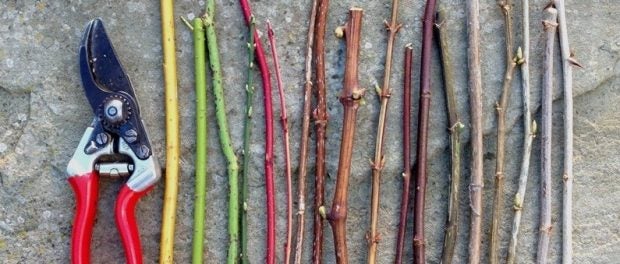Planting Fall Perennials – Permaculture Tips

Tips For Planting Fall Perennials – from Sean Dembrosky of Edible Acres
As most annual crop farms think about winding down for the fall after a long season, some folks start planning for establishment of long term perennial plantings. As the weather cools and the leaves drop, it can be a perfect time of year to consider planting fall perennials (trees, shrubs, perennial herbs, etc.) and an excellent time to propagate and expand existing plantings. At Edible Acres, (www.edibleacres.org) a small scale and human powered nursery just north of Trumansburg, New York, fall is the time when we do most of our propagation and planting.
Even though we have cold and snowy winters, the roots of trees and other perennials, protected by a deep mulch and snow, spend most of the winter developing feeder roots and really locking themselves into the soil. When spring arrives, they are ready to burst forth and put on tremendous growth.
At Edible Acres, we ship bare root cuttings of fruit and nut trees, shrubs, vines, and perennials, and more for early spring and late fall planting times (https://www.edibleacres.org/purchase). September through November is the perfect time for planting fall perennials, and presents an opportunity to dig up and divide you own perennial herbs like oregano, rhubarb, echinacea, chives and so much more. Taking dormant cuttings of plants like elderberry and currants and pushing the 1′ or so long sticks into freshly prepared garden soil can allow the cuttings to root over winter and begin growing in new locations, expanding small fruit orchards dramatically with low to no cost. Raspberry and blackberry patches can be dug up and spread to new locations in the fall as well.
Perhaps you have aspirations to grow trees like chestnuts, walnuts, peaches, pears and more. Consider collecting seeds for trees this time of year and planting them amongst your fall garlic planting. At equal spacing as you would plant garlic, you could have chestnut and hazelnut, etc., seeds nestled in and protected from vole and mice damage through the winter and ready to grow in the spring. After your garlic harvest next summer, you can leave the trees to continue on until next fall when they are dormant and move them to their final homes, or perhaps leave them to grow in position, with a small ring of garlic left to protect them. Very low risk and a wonderful experiment.
Most of us find late winter and early spring to be incredibly hectic getting ready to start our long growing seasons. Consider this fall a perfect opportunity to focus on adding and expanding to your long term goals with propagation and planting fall perennials!








 Your Privacy Choices
Your Privacy Choices
Leave a comment